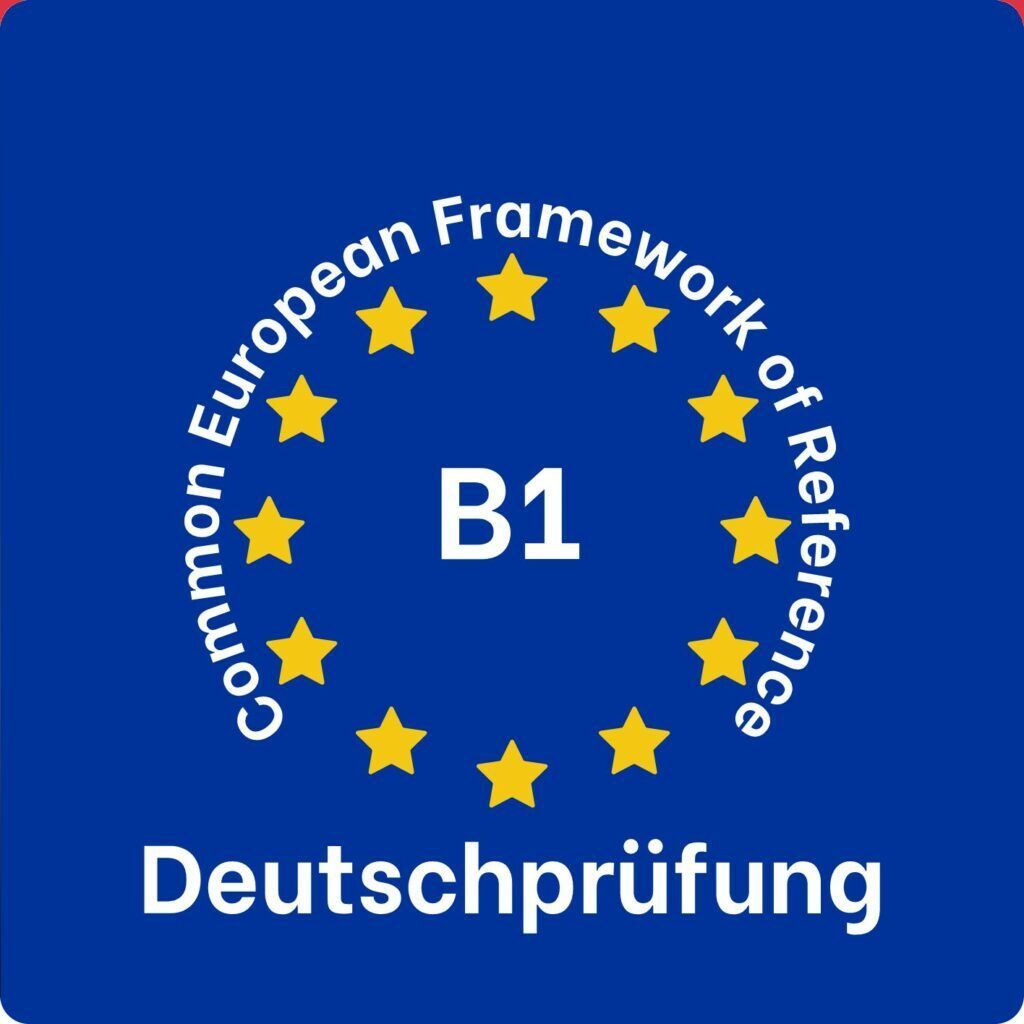The ENA-B1 certificate declares advanced language skills at the third level (B1) of the Common European Framework of Reference for Languages (CEFR). The exam tests productive skills such as writing and speaking, as well as receptive skills - reading and listening.

ENA German exams are general language exams and can therefore be used in a wide range of contexts. The B1 ENA German test was developed for candidates who have reached the age of 16 in the year of the test and are learning German as a foreign language as well as a second language. We maintain neutrality in the development of our tests with regard to age, culture, origin and gender. The ENA German tests are used by people who need an official certificate, want to attend a preparatory college in Germany, want to live and work in Germany or simply want to prove their learning success at B1 level. Prepare for your exam with our model exams!
You can understand the main points when clear standard language is used and when dealing with familiar matters from work, school, leisure, etc. You can deal with most situations encountered when travelling in the language area. You can express yourself simply and coherently on familiar topics and areas of personal interest. They can talk about experiences and events, describe dreams, hopes and goals and give brief reasons or explanations for plans and opinions. The use of German is more orientated towards the private sector and is also used in public, semi-public and professional contexts.
You can understand straightforward factual information on common everyday or work-related topics, recognising the main points and individual pieces of information, provided it is clearly articulated and spoken with a familiar accent. You can understand the main points when speaking in clearly articulated standard language about familiar things that you normally encounter at work, in education or in your free time; can also understand short stories.
You can read straightforward non-fiction texts on topics related to your own interests and specialisms with satisfactory comprehension.
They can write uncomplicated, coherent texts on several familiar topics from his/her field of interest, whereby individual shorter parts are linked in a coherent sequence.
They can give a relatively fluent, uncomplicated but coherent description of topics from his/her areas of interest, with the individual points being strung together in a linear fashion.

The ENA German exam B1 consists of two parts: Reading & Writing (60 points) and Listening & Speaking (40 points). The "Writing" exam consists of reading comprehension + language modules, written expression. The "Listening & Speaking" exam includes the oral part of the exam and listening comprehension. The ENA German exam B1 can be taken either as a complete exam or as a partial exam. The entire exam lasts 150 minutes (+ 10 minutes for formalities and +15 minutes preparation time).
The ENA German exam B1 has a total of 100 task points that can be achieved. The reading comprehension section accounts for 20-25 points. The distribution of points varies depending on the exam.
The ENA German exam B1 has a total of 100 task points that can be achieved. The Text Elements section accounts for 15-25 points. The distribution of points varies depending on the exam.
The ENA German exam B1 has a total of 100 task points that can be achieved. The written expression section accounts for 10-20 points. The distribution of points varies depending on the exam.
The ENA German exam B1 has a total of 100 task points that can be achieved. The listening comprehension section accounts for 20-25 points. The distribution of points varies depending on the exam.
The ENA German exam B1 has a total of 100 task points that can be achieved. The oral expression section accounts for 15-20 points. The distribution of points varies depending on the exam.
In two tasks, reading comprehension is tested in global, detailed and/or selective comprehension. This takes about 40 minutes. In two "Text elements" tasks, gaps in texts in advanced language are completed in approx. 40 minutes using given words (e.g. prepositions, verbs, adjectives, suffixes, prefixes)
Written expression is tested in one or two tasks. Participants are expected to be able to write texts with several key points and to be able to write in production tasks (e.g. expressing an opinion) and interaction task texts (e.g. formal apology). They are expected to consider several task points and write a coherent, longer text.
Three tasks test global comprehension, detailed comprehension and selective comprehension using standard language listening texts. The audios may be listened to twice. Depending on the task, questions about the text listened to are answered in writing or orally with the recording of your own voice at the touch of a button on the PC
Speaking skills are tested in two to three tasks. The preparation time is 15 minutes. Participants answer and ask questions interactively. (3 min) This is followed by a production task, e.g. the participants are asked to present something (texts, slides, pictures approx. 3 min). The third task is an interaction task (discussion) or production task (describe picture) (3 min.)
READING COMPREHENSION & TEXT ELEMENTS
Task types:
Task objectives:
Text types:
WRITTEN PRINTOUT
Text types:
HEARING
Task types:
Task objectives:
Audio (video) types:
ORAL EXPRESSION
Task types: Production
Task types: Presentation
Task objectives: Interaction

Enalingua – Ihre Sprachschule in Frankfurt Bockenheim.Wir helfen Ihnen, Deutsch erfolgreich zu lernen und Ihr Sprachniveau von A1 bis C2 zu erreichen – online oder vor Ort in Frankfurt am Main.
© enalingua 2021 All Rights Reserved.